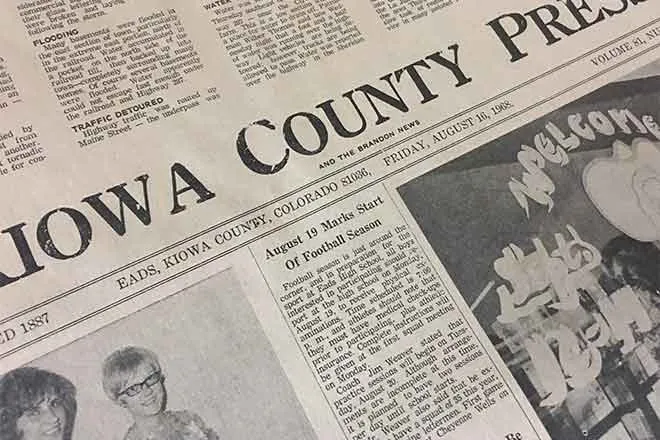
Volunteers at work on Wyoming’s Lemley Mill, Miner’s Delight Saloon
Eric Galatas
(Wyoming News Service) Volunteers have set up camp and are hard at work on the historic Lemley Mill in Wyoming's South Pass Historic Mining District, where the Red Desert meets the Wind River Mountains.
They're working to stabilize the building, which still has mining equipment inside.
Renee Bovee, program coordinator for the Wyoming Cultural Trust Fund, said once it's on better footing, visitors will be able to peek through the windows and see what a gold mill looked like in the early 20th century.
"Eventually," said Bovee, "people will be able to see this mill, understand the surrounding, understand what it was like to try and be a gold miner in that area with Wyoming's horrible winters."
Constructed during the Great Depression, Lemley is one of the last remaining gold mills in the area.
The 30-square-mile mining district saw swarms of migrant miners after gold was discovered in 1842. By 1868, some 1,500 people lived in South Pass and Atlantic City.
The fund has contributed resources for the project through a grant to the Alliance for Historic Wyoming.
The U.S. Bureau of Land Management partnered with the nonprofit Historicorps to assemble a team of volunteers to assist in structural improvements at the mill, and the only saloon in Miner's Delight.
Liz Rice, director of workforce engagement and communications for Historicorps, said the saloon offers a window into boom-and-bust towns of the era.
They were wildly active over a few years, often with multiple saloons, granaries to purchase food, housing and other buildings filled with a variety of businesses.
"And in this case," said Rice, "the saloon is unique not only for being the only one in this location, but it's also one of the most deteriorated buildings that can still be saved."
The saloon is one of 17 buildings still standing in Miner's Delight, and Rice said she expects to be sending more volunteers - students and young adults learning traditional trades and crafts - back to the site in coming years.
She said participants rarely leave a few pounds lighter, thanks to delicious meals provided by Historcorp - one of many benefits reported by volunteers.
"One of the things that I hear the most is how much camaraderie they experienced," said Rice, "how much they learned about the history, how much they were able to advance their own technical skills on a historic preservation project site."
















